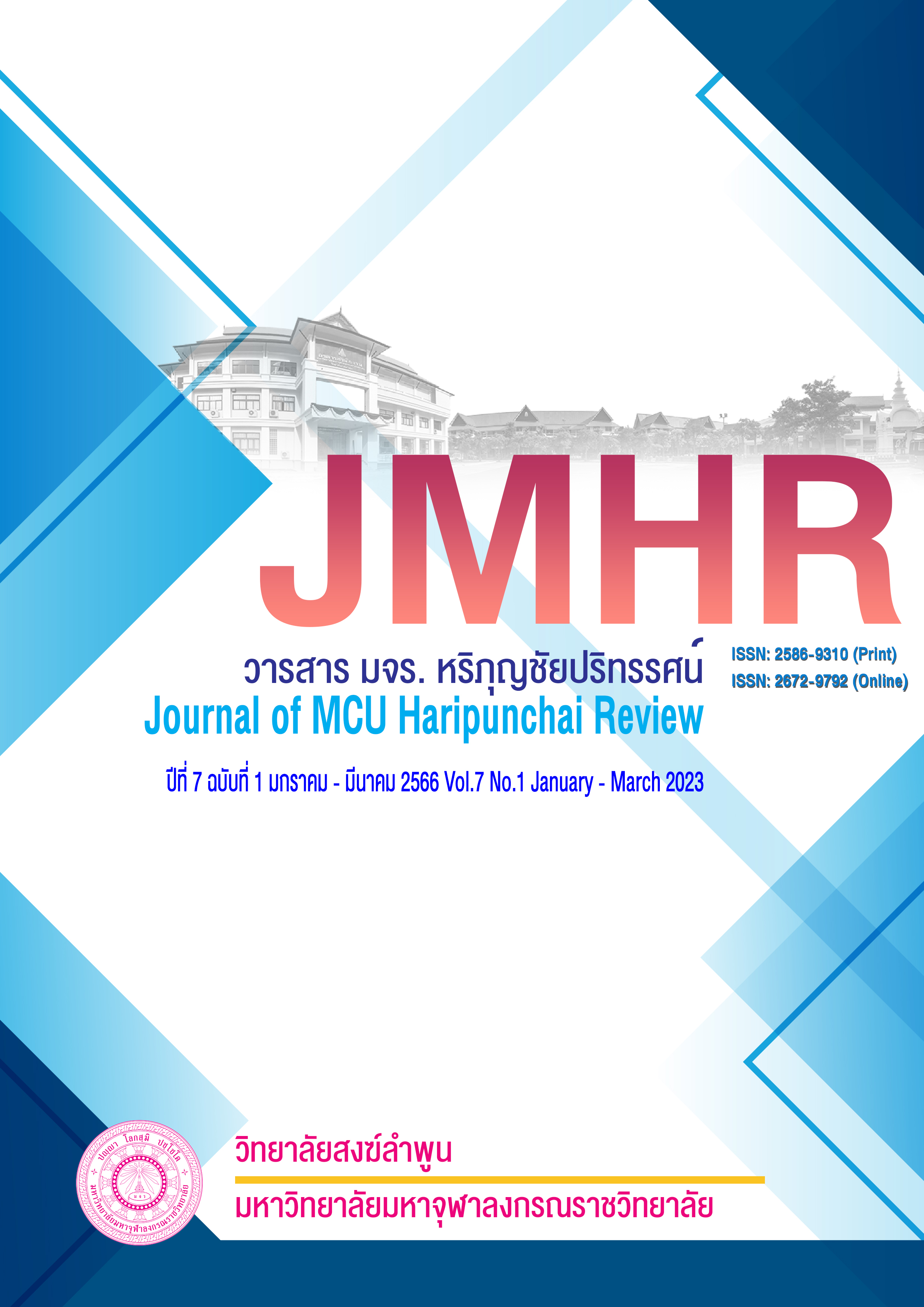Developing a model for the administration of the student support system for getting to know studentsIndividually using the Brahma Vihara 4 principles of lower secondary school students at Mae Win Samakkee School, Mae Wang District, Chiang Mai Province
Main Article Content
Abstract
This research aims to 1) To study the situation of the administration of the student care and support system in terms of knowing individual students of junior high school students at Mae Win Samakkee School. 2) To create a model for the development of student care and support system administration in knowing each student as an individual. by using the 4 Brahma Viharn principles of lower secondary school students at Mae Win Samakkee School 3) An experimental model for the development of the administration of the student support system in knowing each student as an individual by using the 4 Brahma Viharn principles of lower secondary school students at Mae Win Samakkee School 4)Evaluate and develop the use of the management development model of the student support system in knowing each student as an individual. by using the four Brahmavihara principles of junior high school students at Mae Win Samakkee School, Mae Wang District, Chiang Mai Province. Research and development methods were Mae Win Samakkee School administrators and teachers, totaling 15 people. Data analysis statistics were percentage, mean, standard deviation and standard error. and the interquartile range
research results
1) The school does not yet have a system or a clear form of administrative system for taking care of students. cause you do not know the real information
2) Create a model for the development of student care and support system administration in knowing each student as an individual. By using the principles of 4 Brahma Vihara, namely kindness, kindness, compassion and equanimity, it was found that overall all aspects had the appropriateness and feasibility assessment results.
3) The experimental results showed that the statistical values were significantly different at 0.05, where all items in all aspects had a t-test value less than 0.05, indicating that there were significant differences in the mean scores. Statistics at level 0.05
4) The result of the evaluation and development of the use of the model found that all items had the mean value at the highest level, which was the same best model, with the item having the highest mean value was Mutita.
Article Details

This work is licensed under a Creative Commons Attribution-NonCommercial-NoDerivatives 4.0 International License.
References
กระทรวงศึกษาธิการ. (2546). พระราชบัญญัติการศึกษาแห่งชาติ พ.ศ. 2542 และแก้ไขเพิ่มเติม (ฉบับที่ 2) พ.ศ. 2545. กรุงเทพมหานคร: องค์การรับส่งสินค้าและพัสดุภัณฑ์.
จักรภพ เนวะมาตย์. (2560). การพัฒนารูปแบบการบริหารระบบการดูแลช่วยเหลือผู้เรียนของวิทยาลัยเทคนิคตาก สังกัดสำนักงานคณะกรรมการการอาชีวศึกษา. วิทยาลัยเทคนิคตาก, ตาก.
เฉลิมพงษ์ สุขสมพนารักษ์. (2561). การพัฒนาระบบดูแลช่วยเหลือนักเรียนโรงเรียนบ้านช่างหม้อ อำเภอแม่สะเรียง จังหวัดแม่ฮ่องสอน. วิทยานิพนธ์ศึกษาศาสตรมหาบัณฑิต (สาขาวิชาการบริหารการศึกษา). มหาวิทยาลัยราชภัฏเชียงใหม่.
พระมหาสุวัฒน์ กิตฺติเมธี (คงยืน), อุทัย วรเมธีศรีสกุล และประยูร แสงใส. (2563). การจัดการเรียนรู้ตามหลักพรหมวิหาร 4 ในโรงเรียนพระปริยัติธรรมแผนกสามัญศึกษา จังหวัดอุบลราชธานี. Journal of Modern Learning Development. 5 (1), 47-61.
บุญชม ศรีสะอาด. (2545). การวิจัยเบื้องต้น. กรุงเทพมหานคร: บริษัทสุวีริยาสาสน์ จำกัด.
โรงเรียนแม่วินสามัคคี. (2563). แผนปฏิบัติงานประจำปีงบประมาณ 2563. เชียงใหม่: 2563
ธิตินัดดา สิงห์แก้ว. (2562). การพัฒนาระบบดูแลช่วยเหลือนักเรียนโดยใช้วงจร PDCA : กรณีศึกษาโรงเรียนวัดป่าตึงห้วยยาบ อำเภอบ้านธิ จังหวัดลำพูน. วิทยานิพนธ์ครุศาสตรมหาบัณฑิต. บัณฑิตวิทยาลัย, มหาวิทยาลัยราชภัฏเชียงใหม่.
อภิสิทธิ์ รอดบำเรอ. (2559). รูปแบบการบริหารระบบดูแลช่วยเหลือนักเรียนในสถานศึกษา สังกัดสำนักงานเขตพื้นที่การศึกษามัธยมศึกษา เขต 6. วิทยานิพนธ์ปริญญาปรัชญาดุษฎีบัณฑิต.สาขาวิชาการบริหารการศึกษา, มหาวิทยาลัยนอร์ทกรุงเทพ.
Faul, F., Erdfelder, E., Buchner, A. & Lang, A. G., (2009). G*Power 3.1: Tests for correlation and regression analysis. Behavior Research Methods. 41 (4), 1149-1160.


